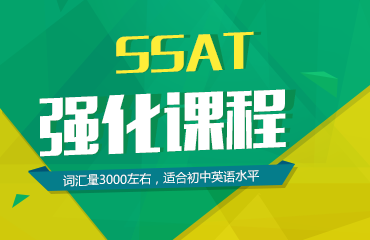6月29日的雅思阅读考题回顾已经放出来了,那么在以下文章中,北京朗阁小编就为大家带来2019年6月29日雅思阅读考题回顾,请看以下内容:
6月29日的雅思阅读考题回顾已经放出来了,那么在以下文章中,北京朗阁小编就为大家带来2019年6月29日雅思阅读考题回顾,请看以下内容:
|
考试日期 |
2019年6月29日 |
|
|
Reading Passage 1 |
||
|
Title |
Corporate Social Responsibility |
|
|
Question types |
Matching Information Multiple Choice |
|
|
文章内容回顾 |
介绍了一种环境友好且可承担社会责任的商业模式。
Questions 1-4 The reading Passage has seven paragraphs A-H. Which paragraph contains the following information? 1 An action taken to confirm social responsibility in conservation project---E 2 a description of the conventional way the ads applied to talk to its customers---F 3 A history of a humble origin and expansion---D 4 management practices are intended to line up the company's al with participants' prosperity---B
Questions 5-7 Choose the three correct letters from A to F. 5-7) What are true about the Ben & Jerry's company management A There was little difference between the highest salary and the lowest B They were advertising their product with powerful internal marketing C They offer the employee complimentary product D Employees were encouraged to give services back to the community E the products are designed for workers to barter for other ods and services F offered a package of benefits for disable employees
Questions 8-10 Choose the three correct letters from A to F. What are the factors that once contributed to the success for the BODY SHOP? A pioneering the natural-ingredient cosmetics market B appealed to the rich women C focused on their lavish ads campaign D The company avoided producing the traditional cosmetics products E its moral concept that refuses to use animals- tested ingredients F its monetary donations to the communities and in developing countries
Questions 11-13 Choose the three correct letters from A to F. What are the factors leading to the later failure for BODY SHOP company? A its philosophy that there is real beauty in everyone B fail to fulfill promises by misleading the public C faced growing competition D its increasing demand for something that the customers do not actually need E its newer, fresher brands are not successful in the market F fail to offer cosmetics at lower prices than competitors |
|
|
题型难度分析 |
有阅读中难的信息配,其余的多选题也较难定位,文章难度偏大。 |
|
|
剑桥雅思推荐原文练习 |
剑5 Test 1 Passage 2 |
|
|
Reading Passage 2 |
||
|
Title |
Meteorite Trade |
|
|
Question types |
List of Headings Multiple Choice Blank Filling |
|
|
文章内容回顾 |
主要讲述了陨石贸易的所有权归属,*作用和私人收藏。 |
|
|
相关英文原文阅读 |
Meteorites are space rocks that fall to Earth’s surface.
Meteorites are the last stage in the existence of these types of space rocks. Before they were meteorites, the rocks were meteors. Before they were meteors, they were meteoroids. Meteoroids are lumps of rock or metal that move around the Sun. Meteoroids become meteors when they crash into Earth’s atmosphere and the gases surrounding them briefly light up as “shooting stars.” While most meteors burn up and disintegrate in the atmosphere, many of these space rocks reach Earth’s surface in the form of meteorites.
Dust-sized particles called micrometeorites make up 99 percent of the approximately 50 tons of space debris that falls on the Earth’s surface every day. Some meteorites, however, are as large as boulders.
The largest meteorite found on Earth is the Hoba meteorite discovered in Namibia in 1920. The Hoba meteorite weighs roughly 54,000 kilograms (119,000 pounds). The Hoba meteorite is so big, and so heavy, it has never been moved from where it was found!
Most meteorites look very much like rocks found on Earth, except meteorites usually have a dark, burned exterior. This exterior is formed as friction from the atmosphere melts the meteorite as it crashes toward Earth. Known as thermal ablation, this process can also give meteorites a roughened, smooth, or thumbprint surface. Thermal ablation creates these different textures due to different chemicals present in the meteorite.
Meteorites crash through the atmospheres of all planets and moons in our solar system. Some planets and moons don't have enough atmosphere to break apart meteors, resulting in large meteorites. These larger meteorites create deep, round impact craters that can be found all over our Moon, Mercury, and Mars. In 2005, the first meteorite found on another planet was discovered by Opportunity, one of NASA’s Mars rover spacecraft. In 2014, Opportunity’s sister spacecraft, Curiosity, discovered a meteorite that was 2 meters (7 feet) wide, making it the largest yet discovered on Mars.
Types of Meteorites More than 60,000 meteorites have been found on Earth. Scientists have divided these meteorites into three main types: stony, iron, and stony-iron. Each of these types has many sub-groups.
Stony Meteorites Stony meteorites are made up of minerals that contain silicates—material made of silicon and oxygen. They also contain some metal—nickel and iron. There are two major types of stony meteorites: chondrites and achondrites.
Chondrites themselves are classified into two major groups: ordinary and carbonaceous. Ordinary chondrites are the most common type of stony meteorite, accounting for 86 percent of all meteorites that have fallen to Earth. They are named for the hardened droplets of lava, called chondrules, embedded in them. Chondrites formed from the dust and small particles that came together to form asteroids in the early solar system, more than 4.5 billion years a. Because they were formed at the same time as the solar system, chondrites are integral to the study of the solar system’s origin, age, and composition.
Ordinary chondrites can be classified into three main groups. The groups indicate the meteorite’s quantity of iron. The H chondrite group has a high amount of iron. The L chondrite group has a low amount of iron. The LL group has a low amount of iron and a low amount of metal in general.
Carbonaceous chondrites are much more rare than ordinary chondrites. Astronomers think carbonaceous chondrites formed far away from the sun as the early solar system developed. As their name implies, carbonaceous chondrites contain the element carbon, usually in the form of organic compounds such as amino acids. Carbonaceous chondrites also often contain water or material that was shaped by the presence of water.
Like ordinary chondrites, carbonaceous chondrites can be more minutely classified based on their mineral composition. All groups of carbonaceous chondrites are marked with a two- or three-letter code starting with C. Carbonaceous chondrites are often named after the first specimen of that type recovered. The CI group, for instance, is named after the Ivuna meteorite, which crashed into Tanzania in 1938. CI meteorites have a high amount of carbon, as well as clays. Carbonaceous chondrites can also be named after the place where the first specimen of the type was found. The CV group is named after a meteorite that crashed near the city of Vigarano, Italy, in 1910. The most famous CV meteorite is probably the Allende meteorite, which fell to Earth near Pueblo de Allende, Chihuahua, Mexico, in 1969. The Allende meteorite has thousands of tiny chondrules made of the mineral olivine. The Allende meteorite also has grains of a special kind of carbon—diamonds. These diamonds are actually older than the solar system, and astronomers think they were produced as blast material from a nearby, ancient supernova.
Achondrites do not contain the lava droplets (chondrules) present in chondrites. They are very rare, making up about 3 percent of all known meteorites. Most achondrites form from the brittle outer layers of asteroids, which are similar to Earth’s crust.
There are many classifications of achondrites. The “primitive achondrite” group, for instance, has a very similar mineral composition to chondrites. Lunar meteorites are achondrites that crashed to Earth from the Moon, while Martian achondrites crashed to Earth from our neighbor planet, Mars.
Very few meteorites, only about 0.2 percent, come from Mars and the Moon. These achondrites are the results of Mars and the Moon’s own meteorite impacts. Large meteorites hit the surface of Mars and the Moon, blasting off bits of rock. These rock bits rarely make their way to our atmosphere as meteors and even more rarely hit the Earth’s surface.
Iron Meteorites Iron meteorites are mostly made of iron and nickel. They come from the cores of asteroids and account for about 5 percent of meteorites on Earth.
Iron meteorites are the most massive meteorites ever discovered. Their heavy mineral composition (iron and nickel) often allows them to survive the harsh plummet through Earth’s atmosphere without breaking into smaller pieces. The largest meteorite ever found, Namibia’s Hoba meteorite, is an iron meteorite.
Stony-Iron Meteorites Stony-iron meteorites have nearly equal amounts of silicate minerals (chemicals that contain the elements silicon and oxygen) and metals (iron and nickel).
One group of stony-iron meteorites, the pallasites, contains yellow-green olivine crystals encased in shiny metal. Astronomers think many pallasites are relics of an asteroid’s core-mantle boundary. Their chemical composition is similar to many iron meteorites, leading astronomers to think maybe they came from different parts of the same asteroid that broke up when it crashed into Earth’s atmosphere.
Meteorite Impact Craters Meteorites crash through the Earth’s atmosphere with tremendous force. The largest meteorites leave enormous holes in the ground called impact craters.
The best-preserved impact crater in the world is the Barringer Meteorite Crater, near Winslow, Arizona. There, more than 50,000 years a, a meteorite weighing about 270,000 metric tons (300,000 tons) slammed into the Earth with the force of 2.5 million tons of TNT. The impact blasted a hole 1 kilometer (.6 miles) wide and about 230 meters (750 feet) deep. The fragments left of the space rock show that it was an iron meteorite.
More than a hundred impact craters have been identified on Earth. Perhaps the most famous is the Chicxulub Crater, in Yucatan, Mexico. The Chicxulub Crater can be identified on land, beneath dozens of meters of sediment, although about half of the feature is submerged in the Gulf of Mexico. It is one of the largest impact craters ever discovered on Earth. Despite its size, the Chicxulub Craber is famous for another reason. Many scientists think the large meteorite that created the Chicxulub Crater—measuring roughly 10 kilometers (6 miles) wide—triggered the extinction of the dinosaurs and other animal and plant life 65 million years a. |
|
|
题型难度分析 |
有较难的标题配,本篇文章难度较大。 |
|
|
题型技巧分析 |
段落标题配对是雅思考试中比较难的题型: 对于段落标题配,可以采取以下步骤: 1.若时间充裕,则精读各段首句,略读其余部分,甚至可直接精读篇幅较小的整段。 2.若时间不充裕,则研究选项标题,看有无明显的定位或排除,如含有明显的定位词、相似选项等。 |
|
|
剑桥雅思推荐原文练习 |
剑6 Test 1 Passage 3 |
|
|
Reading Passage 3 |
||
|
Title |
History of Sports Development |
|
|
Question types |
TRUE/FALSE/NOT GIVEN Multiple Choice |
|
|
文章内容回顾 |
主要讲述了运动的发展历史,粉丝效应和商业化。 |
|
|
相关英文原文阅读 |
Sport in Turkey in the Pre-Islamic Period
Athletic culture in Turkey during the pre-Islamic period involved at least three main outlets for physical competition: archery, cirit, and wrestling. Ample evidence exists that archery was among the most common sports in the pre-Islamic Turkish culture, practiced and performed by rich and poor alike. Survival, after all, depended heavily on skilled marksmanship. Marksmanship also made for ready entertainment, and the best archers were honored and rewarded. According to Celebi (1987), Turks were like other Central Asian peoples in their use of short bows rather than the Western Europeans’ favored longbow. Lewis (1971) attributes the difference to the fact that, while Europe’s medieval archers traveled on foot, the Turks formed light cavalries, which, being on horseback, would have found the longbow unwieldy (p. 203). Turks’ bows and arrows were made of metal, bone, or wood; the material reflected the archer’s status in society (Celebi, 1987). Technical perfection was expected in making both arrow and bow, and the weapons were subjected to thorough testing before use (Celebi, 1987). Arrows were invested with certain symbolic powers in addition to their use as weapons. For example, a young Turkish man about to marry would shoot up an arrow to learn where his marriage tent should be placed (i.e., at the point where the arrow returned to earth) (Lewis, 1978).
Women in pre-Islamic Turkish culture enjoyed extensive freedoms; they did not “sit quietly in their tents all the time” (Adivar, 1930). Shoulder to shoulder with men, they hunted and fought. And they competed with men in archery contests. The pre-Islamic Turkish epic Book of Dede Korkut (translated by Geoffrey Lewis) recounts how Lady Burla, a Khakan’s wife, helped rescue her son from an enemy by using arrow and sword herself to dispatch the threat (Lewis, 1978). The pages of the Dede Korkut also make clear the popularity of wrestling among pre-Islamic Turks. Athletes and others approached the sport with respect; it was honored by heroes and heroines and it figured in many aspects of life (see the offset quotation from Dede Korkut, below, describing the prenuptial wrestling match between Prince Beyrek and his intended’ s housekeeper). Finally, the sport of cirit (or jerid or jereed), a horseback javelin chase, was very popular among the nomadic Turks. Their diet consisting largely of game, they were dependent on hunting. The cirit javelin, made of wood or metal, was designed to kill large animals; during war it could also be used for close fighting. To use the javelin well required a strong arm and a practiced skill (Celebi, 1987). Using it in a game was very dangerous, involving speeding horses and attempts both to hit an opponent with the javelin and catch thrown javelins. Cirit was one of the culture’s most dangerous pursuits, and it was not uncommon for players to die on the field.
Turkish sport during the Islamic period was influenced significantly by the cultural habits and moral codes of Islam practiced in the Middle East (Arabia and Persia). These allowed only men to pursue certain athletic leisure activities, and in general in this period, athletic pursuits–sports–became a privilege of the rich and politically powerful. Again, archery, riding, wrestling, and cirit were the most popular events. It is during this period that athletics began to be institutionalized; a few primitive sports clubs became established. In the 19th century, European diplomats were largely responsible for introducing modern competitive sports to Turkey. The progress of sport in Turkey in the modern era has been problematic, influenced by national political, economic, and social challenges. This is, however, typical of developing countries. There has been very little scholarly research aimed at identifying problems in the development of sports in Turkey. Minimal data about lifelong physical fitness for the masses (i.e. “sport for all” programs) has been established. This article will focus on understanding whether Middle Eastern culture has worked to impede the development of Turkish sports culture by, for example, preventing Turkish women from participating in the activities of athletics and sports.
For thousands of years, games and various types of athletic activities have been significant in the lives of the Turkish people (a people originating in Central Asia). In ancient times Turkish boys were not granted their public names until they had distinguished themselves in athletics. Indeed, during the pre-Islamic era, certain athletic activities were considered expressions of the Turkish religion, art, or love. In the oldest inscriptions on Turkish monuments in Outer Monlia and Siberia (dating to roughly the eighth century B.C.), athletic skills are described as “first-rate” (Lewis, 1978); the gender of the athlete matters not. Exemplifying Turkey’s continuous tradition of sports, the annual Kirkpinar wrestling tournament in Edirne is 650 years old, predating tennis at Wimbledon by approximately 500 years. Turkish wrestlers’ many successes in the modern Olympic Games (until the 1968 Mexico City Games) were no coincidence, but were instead the extension of Turkey’s history and culture. Another example of centuries-old Turkish sporting tradition are the cirit festivals in Erzurum. |
|
|
题型难度分析 |
判断题和选择题可定位,但文章本身较长,文章难度居中偏大。 |
|
|
题型技巧分析 |
单选题做题步骤: (1)找出题干中的关键词,好先定位到原文中的一个段落,有时候题目中会直接标出在哪个段落,因此注意要注意审题。 (2)从头到尾*阅读该段落,根据题干中的其他关键词及选项确定正确答案。 (3)有些题目比较简单,可以直接选择。有些题目比较难,看每个选项都有点像,但又都不太像。这时,可以用排除法,先排除掉肯定不对的选项,然后在剩下的选项中再做出选择。 (4)要注意顺序性,即题目的顺序和题目对应原文的顺序基本一致。 |
|
|
剑桥雅思推荐原文练习 |
剑5 Test 1 Passage 3 |
|
|
考试趋势分析和备考指导: 这次考试涉及到了较多的配对题,尤其是较难的段落标题配对题和段落信息配对题,而目前考试中,要么有信息配,要么有标题配,或者两种题型都有,因此考生在备考的时候应该多注意练习配对题。同时,判断题的出题频率仍然很高,且题量较大,对于这种主流题型,考生在备考的时候应该尽量*准确率,避免丢分。再就是本次考试的文章难度较大,考生需要在平时刻意练习一下精读能力。 |
||




